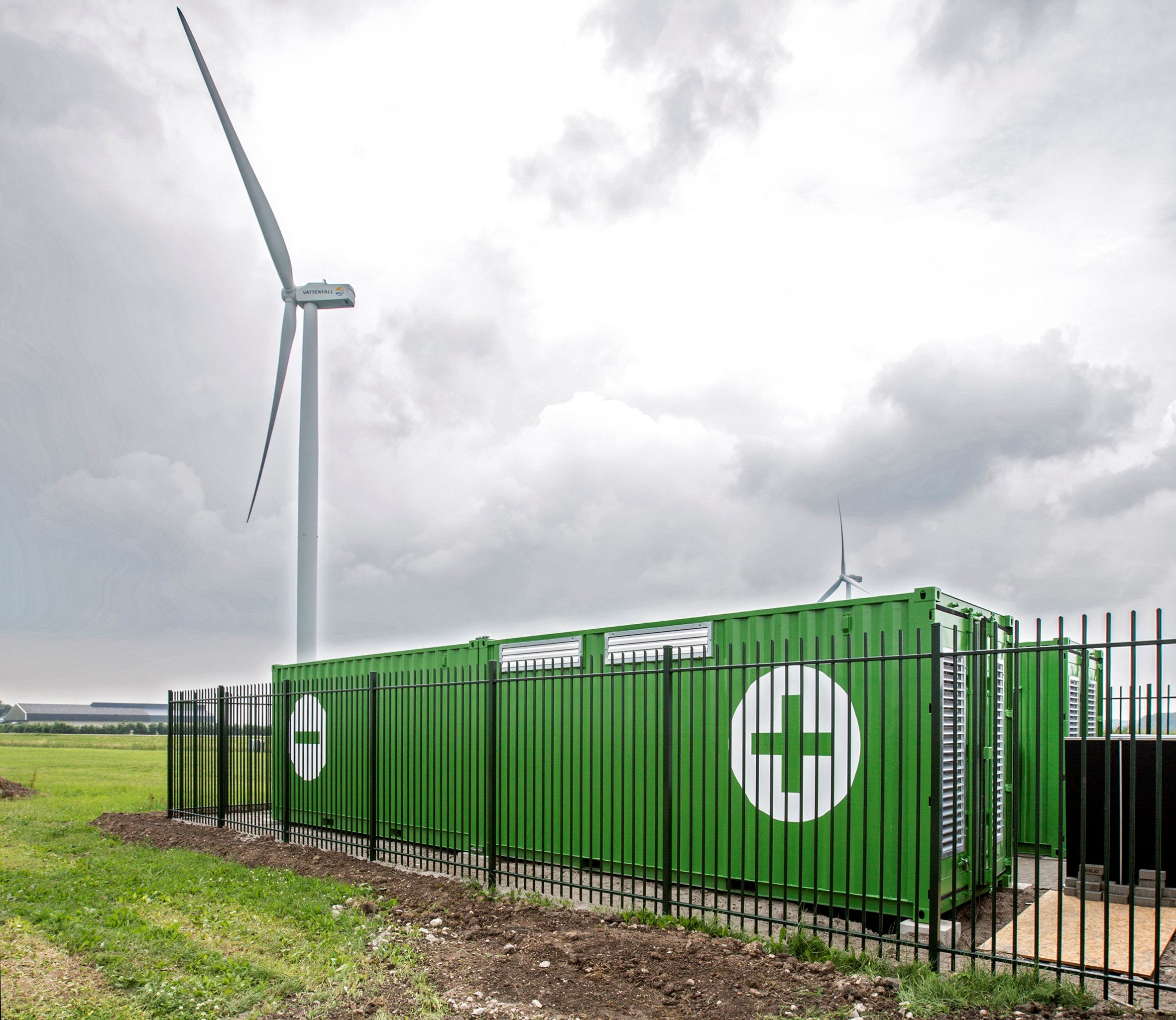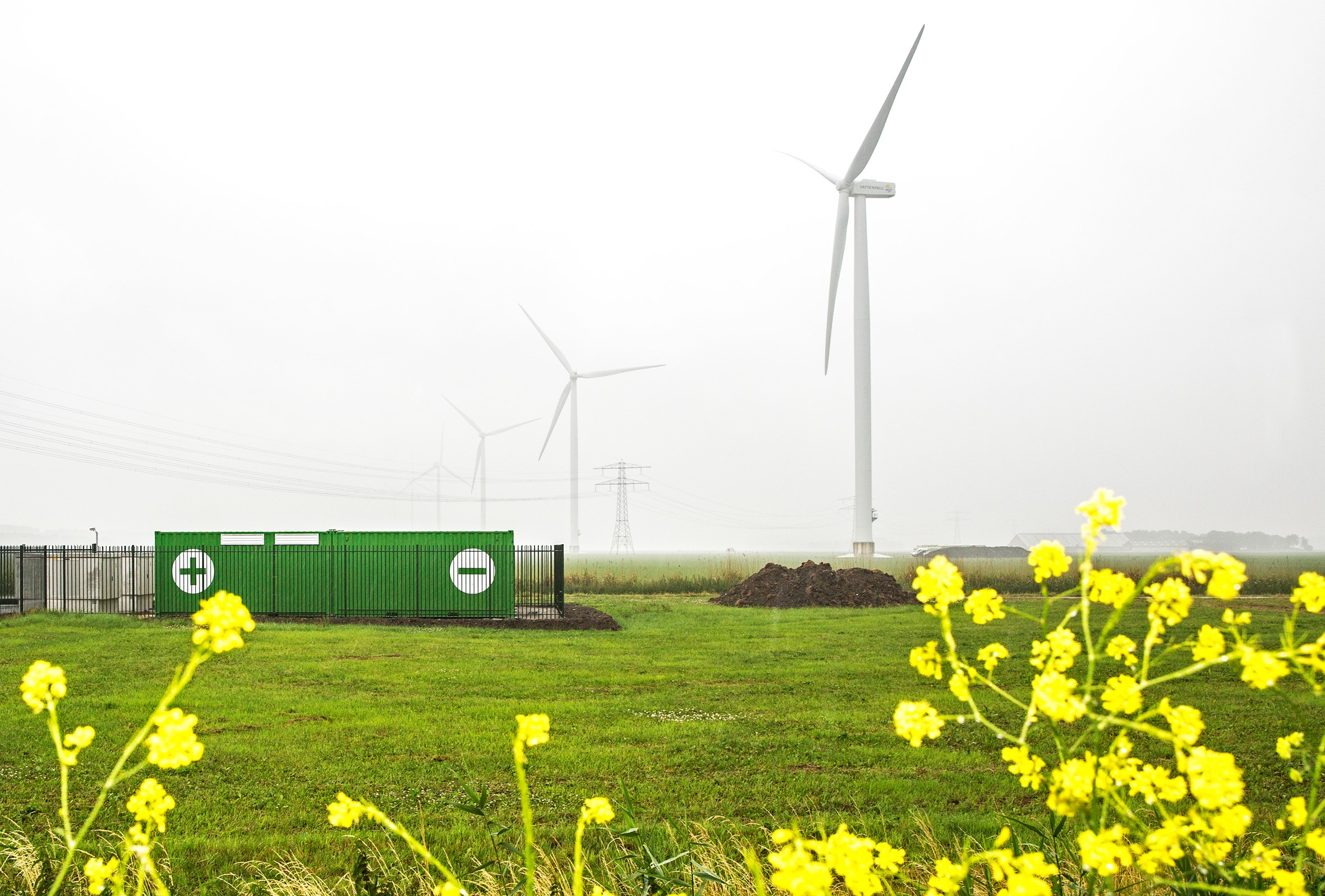
Dutch grid-scale electrical equipment and integration company, Alfen, has delivered a 3MW wind power-integrating energy storage system using BMW car batteries, in the central Netherlands.
Alfen announced this morning that a launch event took place on Wednesday for the facility, at the Prinses Alexia Windpark, Zeewolde. Alfen partnered on the project with Nuon, a subsidiary of Sweden-headquartered utility Vattenfall, which owns and operates the wind farm.
Enjoy 12 months of exclusive analysis
- Regular insight and analysis of the industry’s biggest developments
- In-depth interviews with the industry’s leading figures
- Annual digital subscription to the PV Tech Power journal
- Discounts on Solar Media’s portfolio of events, in-person and virtual
Or continue reading this article for free
The project will help integrate energy from the wind turbines, smoothing out peaks and troughs in generation to mitigate the variable nature of the power plant’s energy output. The 3MW plant will be expanded to 12MW capacity over time, although Alfen has not yet given an expected timescale for this.
This is the second such project for Alfen, with an earlier 1MW installation completed at a wind farm in Giessenburg, central Holland, in May this year.
“This will enable us to make flexible use of renewable energy without wasting energy,” Nuon project manager Boudewijn Tjeertes said, before hinting at further energy storage ambitions for the group.
“And we are looking further: for example, we are planning to install a battery in residential areas with many houses with rooftop solar. In this way residents can use their solar energy that is generated during the day to charge their car at night. Today this is still happening with energy from fossil fuels.”
Latest project to use EV batteries
The project is the latest to repurpose EV batteries for use in the stationary storage space, with BMW involved in a few others already underway this year. This includes a large-scale energy storage installation at a Vattenfall onshore wind farm in Wales, Britain, using more than 33MWh of batteries.
Meanwhile, BMW itself has also launched stationary energy storage systems aimed at the residential and commercial & industrial (C&I) markets using batteries from its i3 electric vehicle range. Nissan’s Leaf EV batteries are among those also being used in “2nd life” battery projects, as are Daimler/Mercedes-Benz Energy batteries. While some projects are reusing or repurposing used EV batteries, the Alfen-Nuon-BMW project is thought to use new devices directly from BMW.
Of the tie-up with BMW, Alfen global energy storage sales head Andreas Plenk said his company’s system is “compatible with multiple batteries”.
“The excellent collaboration with both Nuon and BMW has made it possible to realize this innovative system in a short period of time. In addition, the installation has a modular set-up which makes it easy to expand in the future,” he added.
Batteries used in the Alfen-BMW tie-ups are high voltage devices, produced at its plant in Dingolfing, Bavaria. Vattenfall and BMW Group signed a deal for the supply of 1,000 units of 33kWh lithium-ion batteries this spring.

Dong Energy’s frequency response wind farm battery project
The Zeewolde wind farm energy storage system appears to mark a growing trend for batteries being used to integrate wind power. Several commentators and industry figures at this year’s ees Europe / Intersolar Europe show told Energy-Storage.News that they saw great potential in this area as curtailment of wind energy in particular due to overproduction can be expensive and wasteful.
Earlier this month, Denmark-headquartered integrated energy company Dong Energy said it would combine wind turbines with batteries at Burbo Bank Offshore Wind Farm, off the west coast of the UK.
However, the main aim of this project, economically, will be to provide frequency response services to the grid, with 2MW of battery storage connected to the 90MW wind farm. The facility will respond to fluctuations in energy supply and demand to help maintain the 50Hz operating frequency of the local grid. Power engineering company ABB is supplying the battery storage system.
Ole Kjems Sørensen, Dong Energy senior vice president for partnerships, mergers & acquisitions and asset management referred to a growing need for flexibility in energy networks and said the project was a direct response to that need. He said the delivery of the Burbo Bank project for the transmission network operator (TNO), National Grid, was in some ways a broadening of Dong’s offerings of flexibility services to business customers.
“We’re excited to use battery technology to demonstrate this wind power and battery hybrid capability,” Kjems Sørensen said.
“With eight existing offshore wind farms in the UK and another four under construction, we expect to leverage further technology improvements and innovations and ensure that Dong Energy supports the stability of grid systems as generation capacity becomes cleaner and more sustainable.”
